- This photo post comes via Mongabay’s partnership with the Wildlife Conservation Society’s Wild View blog.
- Under this partnership, we publish occasional original contributions from Wild View that highlights an animal species or group.
- In this post, the Wildlife Conservation Society’s Sarah H. Olson and Julie Larsen Maher write about bats on the occasion of Bat Week, which runs from October 24-31.
Sure, you may know that bats echolocate to control insect populations, but bats have other offbeat super powers. According to fossil records, bats have been around for at least 50 million years, and over that time, they evolved different survival strategies and abilities.
Currently bats represent 20% of all mammal species known on earth, but they are increasingly being threatened by human activities. For example, an introduced fungal disease, white-nose syndrome, affects hibernating bats and can destroy entire colonies. Conservationists are exploring ways to protect the world’s only flying mammal by preserving rural and urban bat habitat and using scientific studies to gain new insights.
When bats inevitably come up in conversation this Halloween, you can help spread the word about unsung bat super powers – and be a hero for bats.
Celebrate Bat Week 2018 from October 24-31.

Hammer-headed Bat, Hypsignathus monstrosus
Powers: Sonic Attraction
The males of this species tend to gather at a lek, a site in the forest canopy where they compete for females, attracting them with their honking calls. Their moose-like nose and lip-folds help create the harmonics of love for this species and also illicit human adoration.


Indian Flying Fox, Pteropus giganteus
Power: Supersize Vegetarian
As the species name suggests, this giant of a bat has a wingspan that can reach nearly five feet across. Despite their size, these bats are frugivorous (fruit-eaters) or nectivorous (nectar-eaters) and in India, they’ve documented these bats help propagate 21 species of plants.

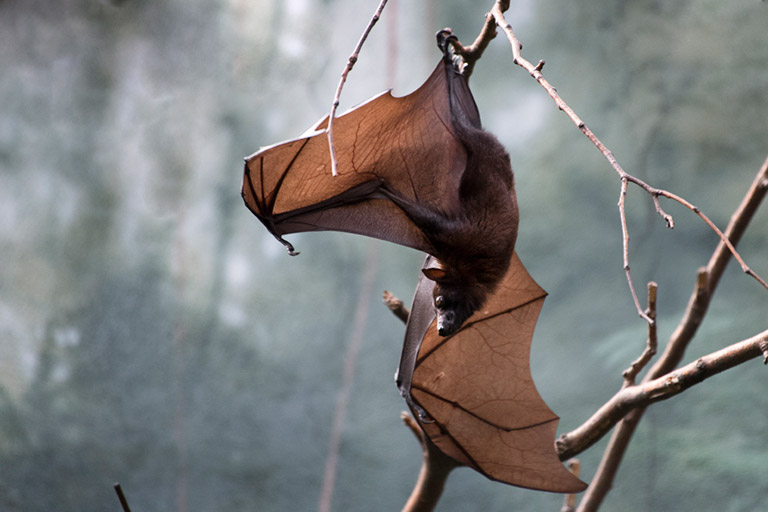
Rodrigues Flying Foxes, Pteropus rodricensis
Power: Immovable
Endemic to a small, isolated island in the Indian Ocean, this bat has survived on Rodrigues since its arrival hundreds of thousands of years ago. Deforestation and overhunting exacerbated natural population declines from cyclones leading to a tiny population of about 70 bats in 1970s. Thanks to conservation efforts to restore habitat and captive zoo populations, the bat population on the island has recovered to 20,000 individuals, and is hopefully here to stay.

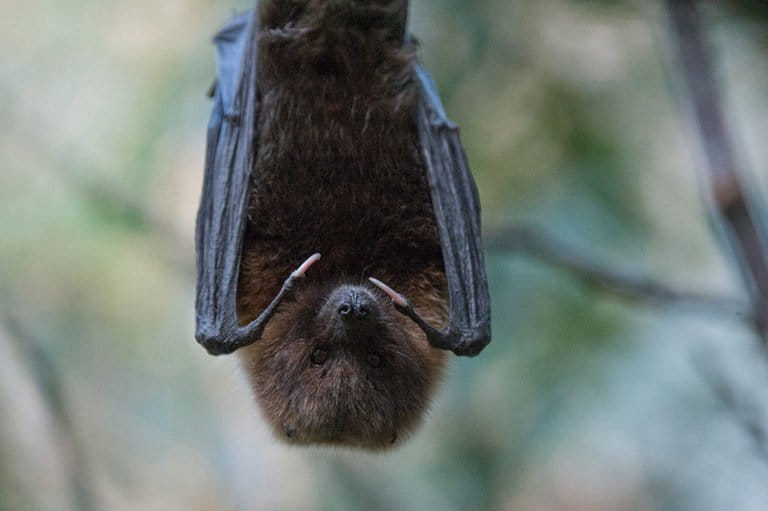
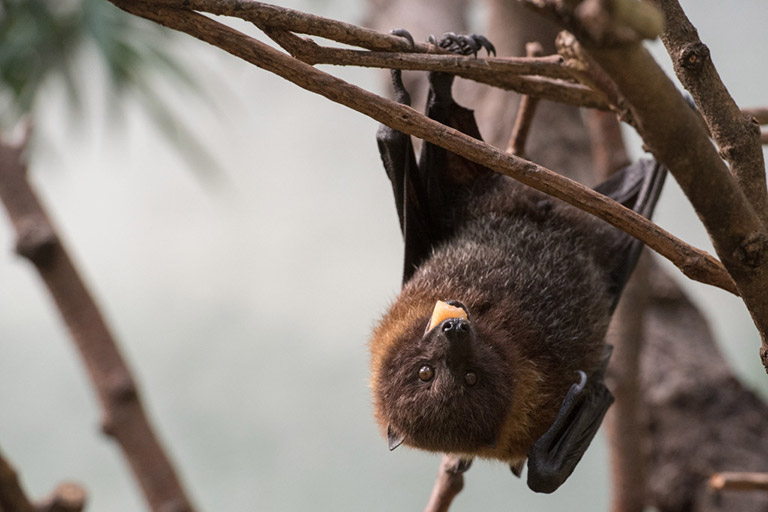
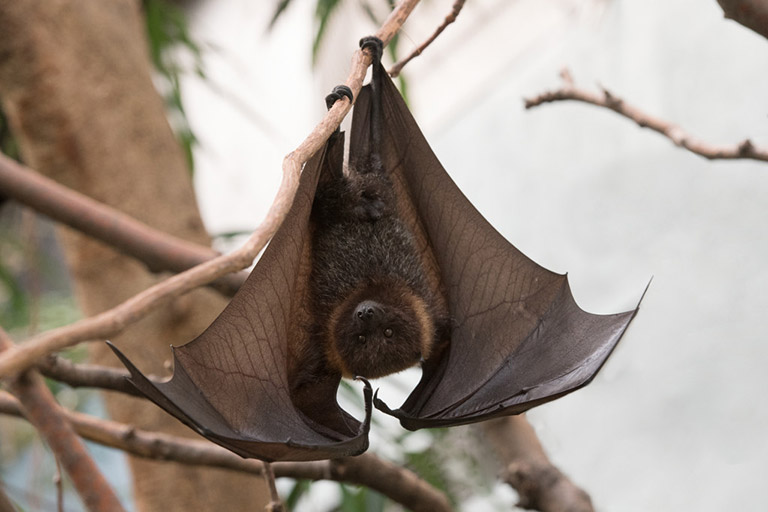
Proboscis Bats, Rhynchonycteris naso
Power: Camouflage
These bats range through Central and South America. When roosting, they form a line and are hidden against the bark of trees.
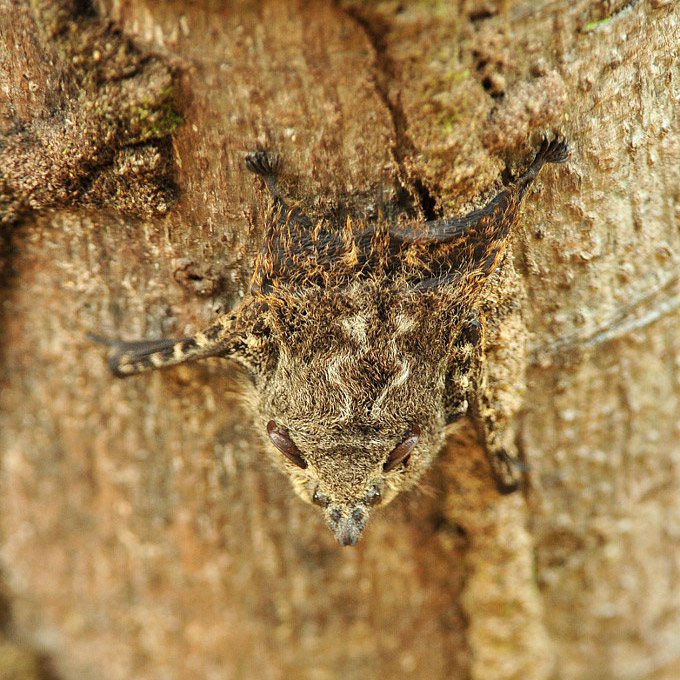

Common Vampire Bat, Desmodus rotundus
Power: Super-powered Saliva
The saliva of this cave-dwelling bat contains proteins that stop blood from clotting while it is feeding on a host. One of the major anticoagulants in the saliva of this bat also reduces inflammation. Researchers are investigating properties of vampire bat saliva to help inform the development of therapies for stroke patients.

Pale Spear-nosed Bats, Phylbostomus discolor
Powers: Omnivory and Speaking Bat
The pale spear-nosed bat is widely distributed from Mexico to Brazil. They like to mix up their diet, eating nectar, fruit, flowers, pollen, insects, and even frogs. These bats also communicate with each other displaying vocal learning and turn taking, which are fundamental hallmarks of human language, with sonic and ultrasonic vocalizations.

Madagascan Rousette Bats, Rousettus madagascariensis
Powers: Aerial Seed Bombing
This fruit bat eats forest figs, seeds and all. Combine that with a fast gut transit time of around 30 minutes that doesn’t appear to affect the germination rate of the seeds, and an ability to poop midflight, and this bat is a talented Johnny Figseed. They are near-threatened on the IUCN Red List.


African Straw-colored Bat, Eidolon helvum
Power: First-class Flyer
Straw-colored fruit bats hang out in huge colonies. They are tireless travelers when foraging with a tendency to fly beyond local food sources to find their favorite fruits and flowers. Near-threatened on the IUCN Red List, their numbers are decreasing in some areas due to heavy harvesting for bushmeat.




Townsend’s Big-eared Bat, Corynorhinus townsendii
Powers: Arial Acrobat
This bat has an unusually small mass to wing surface area ratio making it highly maneuverable in its pursuit of moths and other insects. Young pups can fly within a few weeks of birth in early summer. As adults, this agile bat can hover in a stationary position and fly at speeds of 12 mph to capture prey. Their gigantic ears are pointed forward during flight, providing highly sensitive directional echolocation, and possibly contribute to aerodynamic lift.

More information at www.science4bats.org
Author bios
Sarah H. Olson, PhD, is an Associate Director of Wildlife Health for the Wildlife Conservation Society. Julie Larsen Maher is WCS Staff Photographer and editor of Wild View. She takes photos at the Wildlife Conservation Society’s five New York-based wildlife parks and global field locations.
Editor’s note: Sharp-eyed readers caught a few errors in the original version of this post, including misspellings of Pteropus giganteus, Desmodus rotundus, and Phyllostomus discolor as well as Rhynchonycteris naso being identified as Balantiopteryx infusca. These have been corrected. Additionally, there was considerable debate over the first photo captioned “common vampire bats” — mammalogists and biologists suggested no less than five different species, so we changed the photo to a bat we know is a vampire.